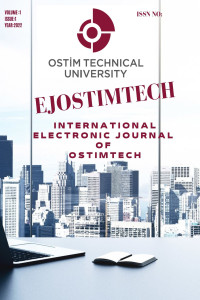Abstract
References
- Bardadym, V. (1996). Computer-aided School and University Timetabling:The New Wave. Practice and Theory of Automated Timetabling, 22-45.
- Botsali, A. R. (2000). A Timetabling Problem: Constraint and Mathematical Approaches. Ankara: The Institute of Engineering and Sciences of Bilkent University.
- Carter, M. (1986). A Survey of Practical Applications of Examination Timetabling. Operations Research, 193-202.
- Castillo, E., & Alguacil, N. (2002). Pure and Applied Mathematics Series. E. Castillo, & N. Alguacil içinde, Building and Solving Mathematical Programming Models in Engineering and Science. New York: John Wiley and Sons, Inc.
- Daskalaki,, S., Birbas, T., & Housos, E. (2004). An İnteger Programming Formulation for a Case Study in University Timetabling. European Journal of Operational Research, 117-135.
- Gunavan, A., Ng, K. M., & Poh, K. L. (2012). A Hybridized Lagrangian Relaxation and Simulated Annealing Method for the Course Timetabling Problem. Computers & Operations Research, 3074-3088.
- Kingston, J. H. (2012). Resource Assignment in High School Timetabling. Annals of, 241-54.
- Qu, R., Burke, E. K., McCollum, B., Merlot, L. T., & Lee, S. Y. (2009). A Survey of Search Methodologies and Automated System Development for Examination Timetabling. Springer J Sched, 55-89.
- Schaerf, A. (1999). A Survey of Automated Timetabling. Artificial Intelligence Review, 87-127.
Abstract
It is included in the class of NP-hard problems due to its course scheduling structure and it is encountered in many areas such as university, high school and working life. As the complexity of the problem increases due to the nature of the problem, it becomes increasingly difficult to reach the desired optimal solutions. In the field of education, the scheduling problem is divided into two as lesson scheduling and exam scheduling. Lesson scheduling is also divided into curriculum-based and enrollment-based. On the basis of registration, it is clear which students choose which courses and efforts are made to prevent overlaps. In curriculum-based scheduling, the course information chosen by the students is not known. In this context of obscurity, it is tried to prevent the lessons of the students who take the same course from overlapping. In this study, the course scheduling problems of the students who take curriculum-based courses in the departments of the Faculty of Economics and Administrative Sciences at a foundation university are discussed. Manually solving the problem requires a lot of staff and then a lot of requirements. Therefore, it is necessary to produce a solution for the problem. Since the problem belongs to the institution and differs from other institutions, it is necessary to develop a model that will produce a solution specific to the institution. For this purpose, a mixed integer programming model was designed and solved with the help of GAMS program to solve the course scheduling problem.
References
- Bardadym, V. (1996). Computer-aided School and University Timetabling:The New Wave. Practice and Theory of Automated Timetabling, 22-45.
- Botsali, A. R. (2000). A Timetabling Problem: Constraint and Mathematical Approaches. Ankara: The Institute of Engineering and Sciences of Bilkent University.
- Carter, M. (1986). A Survey of Practical Applications of Examination Timetabling. Operations Research, 193-202.
- Castillo, E., & Alguacil, N. (2002). Pure and Applied Mathematics Series. E. Castillo, & N. Alguacil içinde, Building and Solving Mathematical Programming Models in Engineering and Science. New York: John Wiley and Sons, Inc.
- Daskalaki,, S., Birbas, T., & Housos, E. (2004). An İnteger Programming Formulation for a Case Study in University Timetabling. European Journal of Operational Research, 117-135.
- Gunavan, A., Ng, K. M., & Poh, K. L. (2012). A Hybridized Lagrangian Relaxation and Simulated Annealing Method for the Course Timetabling Problem. Computers & Operations Research, 3074-3088.
- Kingston, J. H. (2012). Resource Assignment in High School Timetabling. Annals of, 241-54.
- Qu, R., Burke, E. K., McCollum, B., Merlot, L. T., & Lee, S. Y. (2009). A Survey of Search Methodologies and Automated System Development for Examination Timetabling. Springer J Sched, 55-89.
- Schaerf, A. (1999). A Survey of Automated Timetabling. Artificial Intelligence Review, 87-127.
Details
| Primary Language | English |
|---|---|
| Journal Section | Research Articles |
| Authors | |
| Publication Date | November 28, 2022 |
| Submission Date | October 7, 2022 |
| Published in Issue | Year 2022 Volume: 1 Issue: 1 |


